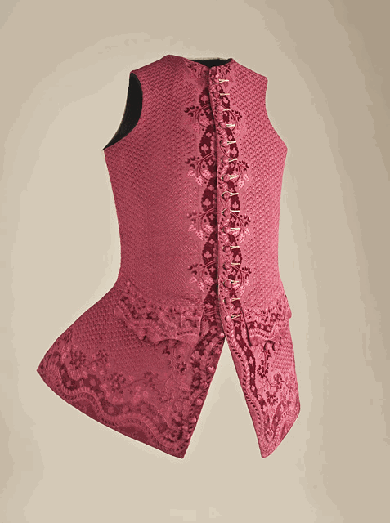In Fashioning the Bourgeoisie, Perrot navigates the class-infused (and enforced)
fashion of France to its contemporary ancestors in our current closets and
drawers. During this journey, Perrot ‘s discussion touches on the struggles of negotiating what fashion is for the bourgeoisie (or general upper class) and whether or not this fashion
is attainable for the middle and working classes. At times it’s not; as the
upper class was, by law, privy to the fashions most effectively able to display an elite cultural
status. For example, in 18th century France we see restrictions against middle or working class members adorning lavish threading or ornamentation associated with upper class fashion Early in the reading, Perrot points out that these laws existed because
clothing gave “meaning” to its wearer. This commentary harkens back to last
week’s reading, when Kirsh-Gimblett links dramaturgy and exhibitions. Although Kirsh-Gimblett focuses more on displaying findings in a museum, one notes the link between museum exhibit performance and societal performance as the participants in each attempt to act in a desired way. For the purposes of Perrot's discussion, this performance is, at times, a struggle for those lacking in means.
In repealing the fashion
laws in France during the 18th century, Perrot notes a turning point in the
upper class’ stranglehold on dictating high end fashion. After this point,
popular clothing was determined by availability via department store and the
rise in fashion journalism. These two addition appear to have worked in tandem to promote “short-term
fashion,” a term that Perrot gives little value to in his discussion of
fashion’s evolution. The author does, however, seem to devote more attention to
social structure and technological advances as determinants of material
fashion. For instance, in discussing a post-freedom of dress 18th century France, the author notes an
“elaborat[e] … complex system of dress including aesthetics, hygiene, fashion,
and propriety” enacted to keep the power of fashion in the upper class’ hands (p. 20). Although the author
considers “short-term fashion” a myth, it seems that, despite not assisting
fashion's evolution, the constant
shuffling best served to assist the bourgeoisie simply because they could
afford the constant changing. To this end, the structure of power remained in
the upper class, as its members seemingly dictated what was (and was not)
fashionable.
(Above is an example of Baudrillard's
"absense of morality" through brightly
colored material, p. 32.)
Although not French, my late 18th
century waistcoat existed during this same period. The reading forces me to
consider whether or not power was infused in colonial American dress during
this same time. For instance, while I know the owner of my waistcoat was a
“captain,” I wonder if wearing an ivory, satin waistcoat inherently displayed
the status of a captain—if a captain in colonial America held any status at
all. Additionally, while I know Captain Brown died at the age of 74,
I wonder if the waistcoat was connotative of an older or more established
individual in his Philadelphia community. In short, Fashioning the
Bourgeoisie forced me to think beyond the
man and the material and think about the structure of the individual’s
community and what role the object served in satisfying a specific need.
Perrot’s detailed assessment of
fashion’s evolution is helpful in identifying questions to add to the growing
number in attaché case as I attempt to find information about the waistcoat in
late 18th century Philadelphia.

No comments:
Post a Comment